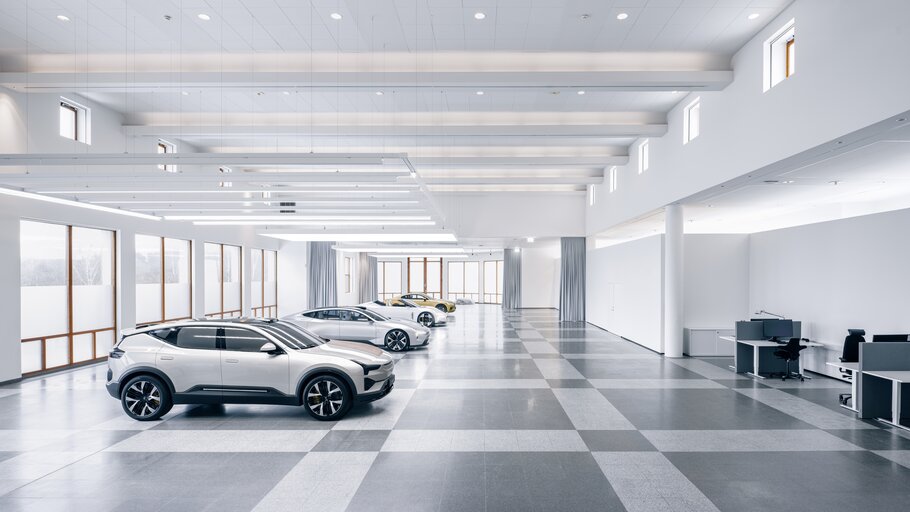
Polestar (Nasdaq: PSNY) has inaugurated its new design studio in Gothenburg, Sweden, nestled in a dense forest adjacent to the brand’s global headquarters. The dedicated facility provides a specialist home for up to 120 design team members, led by Maximilian Missoni, in an environment that combines modernist architecture with the brand’s clean, minimalistic Scandinavian aesthetic.
Born out of a historic former Volvo facility completed in 1984 by Italian Romaldo Giurgola and local architect Owe Svärd, the building has been fully upgraded while maintaining its unique architectural character. Here, the Polestar Design team will continue to build on the brand’s new design language, previewed by the Polestar Precept and electric roadster concept cars, and carried into production with Polestar 3 which launched in October 2022.
Prime materials and details from the original 1980s construction sit juxtaposed alongside a high-quality, modern Scandinavian design from plans drawn up by Maximilian Missoni. The new facility includes a specialist showroom area, clay working station, material and colour lab, auditorium and multiple digital studio spaces, management offices, VR rooms and meeting spaces.
Maximilian Missoni, Polestar’s Head of Design, comments: “When such care, attention to detail and material quality was so carefully considered at the point of construction back in 1982, it was important to me that we respected the original intentions when integrating our studio into the building. We deliberately showcase the original structure and detailing, respecting the very fabric that gives it its unique character.
“But while we wanted to respect tradition, we also wanted this to be a state-of-the-art home for our growing Design team. So, alongside the glorious views out west of the Gothenburg archipelago, the studio features the latest equipment on the inside to make our jobs easier and produce better results in the most efficient way.”
The same attention to detail paid to the building runs through Polestar 3. Aerodynamics were key to shaping the SUV for the electric age. The overall design, with its powerful and wide stance, and low, sweeping roofline, is introduced by the SmartZone and front aero wing. Signifying the shift from ‘breathing to seeing’ as the age of electrification intensifies, Polestar 3 also presented designers with a challenge – to impart a sense of intelligence.
Maximilian Missoni continues: “In today’s age of advanced product design it’s quite easy to display emotions like aggression and sportiness in a car. But try conveying intelligence in design – it’s not so easy. This is something we have spent a lot of time considering, to express the leading technology and sophistication of Polestar 3. It is distilled to the essence of an SUV but at the same time clearly shows a step into a new era.”
While exterior proportions are designed to reflect technology and impart a sporty stance, space inside Polestar 3 has been maximised thanks to the long body (4,900 mm) and wheelbase (2,984 mm). Reducing surface volumes around the cabin’s component architecture and increasing occupant space in all positions results in a more spacious and enjoyable interior.
Colours and materials have been carefully selected and combined to express Polestar’s Scandinavian heritage with a premium look and feel, while addressing sustainability and the redefinition of luxury. The full-length glass roof contributes to the airy feel, and Polestar’s signature logo is integrated into the glass roof in a new way – etched between two layers of the laminated glass and only visible when illuminated.
Polestar 3 goes into production in mid-2023 and first deliveries in launch markets1 are expected in the fourth quarter of 2023.
Previous article
The BMW i4 eDrive35 can now be ordered in the UK


